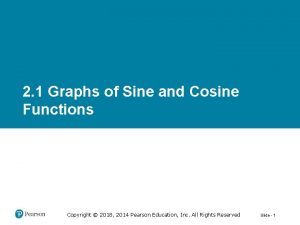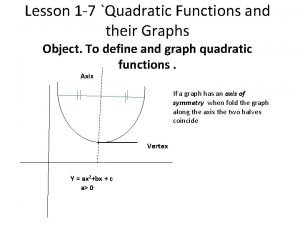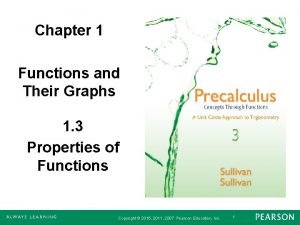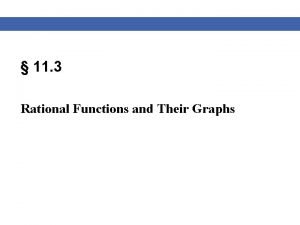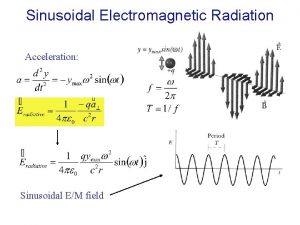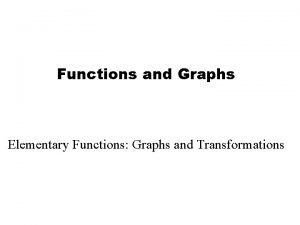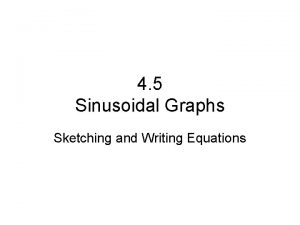8 2 SINUSOIDAL FUNCTIONS AND THEIR GRAPHS Functions








- Slides: 8

8. 2 SINUSOIDAL FUNCTIONS AND THEIR GRAPHS Functions Modeling Change: A Preparation for Calculus, 4 th Edition, 2011, Connally

Amplitude and Midline The functions y = A sin t + k and y = A cos t + k have amplitude |A| and the midline is the horizontal line y = k. Functions Modeling Change: A Preparation for Calculus, 4 th Edition, 2011, Connally

Amplitude and Midline Example 1 State the midline and amplitude of the following sinusoidal functions: (a) y = 3 sin t + 5 (b) y = (4 − 3 cos t)/20. Solution Rewrite (b) as y = 4/20 − 3/20 cost y = - 0. 15 cos t + 0. 2 (a) (b) Amplitude = 3 Midline y=5 Graph of y = 3 sin t + 5 Amplitude = 0. 15 Midline y = 0. 2 Graph of y = 0. 2 − 0. 15 cos t Functions Modeling Change: A Preparation for Calculus, 4 th Edition, 2011, Connally

Period The functions y = sin(Bt) and y =cos(Bt) have period P = 2π/|B|. Functions Modeling Change: A Preparation for Calculus, 4 th Edition, 2011, Connally

Finding Formulas for Functions Example 3 Find possible formulas for the functions f and g in the graphs y = f(t) This function has period 4π Solution The graph of f resembles the graph of y = sin t except that its period is P = 4π. Using P = 2π/B Gives 4π = 2π/B so B = ½ and f(t) = sin(½ t) y = g(t) This function has period 20 The graph of g resembles the graph of y = sin t except that its period is P = 20. Using P = 2π/B gives 20 = 2π/B so B = π/10 and g(t) = sin(π/10 t) Functions Modeling Change: A Preparation for Calculus, 4 th Edition, 2011, Connally

Horizontal Shift The graphs of y = sin(B(t − h)) and y = cos(B(t − h)) are the graphs of y = sin(Bt) and y = cos(Bt) shifted horizontally by h units. Functions Modeling Change: A Preparation for Calculus, 4 th Edition, 2011, Connally

Horizontal Shift Example 7 Describe in words the graph of the function g(t) = cos (3 t −π/4). Solution We want the form cos (B(t − h)). Factor out a 3 to get g(t) = cos (3(t − π/12)). The period of g is 2π/3 and its graph is the graph of f = cos 3 t shifted π/12 units to the right, as shown Period = 2π/3 Horizontal shift = π/12 g(t) = cos (3(t − π/12)) f(t) = cos (3 t ) Functions Modeling Change: A Preparation for Calculus, 4 th Edition, 2011, Connally

Summary of Transformations For the sinusoidal functions y = A sin(B(t − h)) + k and y = A cos(B(t − h)) + k, • |A| is the amplitude • 2π/|B| is the period • h is the horizontal shift • y = k is the midline Functions Modeling Change: A Preparation for Calculus, 4 th Edition, 2011, Connally

